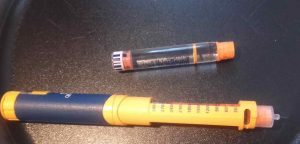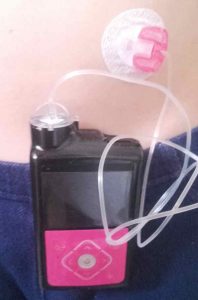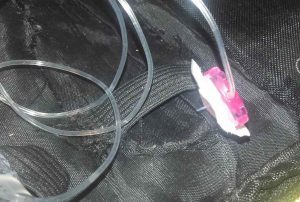What is the insulin pump for me
What is the insulin pump for me and my family.
For those suffering from diabetes mellitus type 1, insulin is essential for their lives.
It is not a choice, it is a necessity.
As essential as oxygen for all the rest of us.
This is because the organism – of those suffering with diabetes mellitus type 1 – does not produce enough insulin, enough for its needs and functions. In other words, there is a complete insufficiency of an organ – pancreas – which is one of our vital organs.
Entering the world of “sweethearts” should understand meanings such us: rapid and slow release of insulin, different types and use of insulin, carbohydrates, carbohydrates equivalents, insulin sensitivity and much more that are contained in the basic education of an insulin-dependent patient.
Tough? Definitely yes. Impossible? Definitely no. Essential? Absolutely.
As exhausting as it may seem or are, all these are the basics that not only the patient is being taught, but also the family environment of juvenile diabetes patient (or diabetes mellitus type 1), especially when they are underaged.
Do they seem much to you? Do not hurry as this is only the tip of the iceberg.
The whole story, is to regulate the level of blood sugar 24 hours a day.
We should not forget that pancreas, in a healthy organism, works constantly 24 hours a day, 7 days a week!
Without a break!
Thus, for an insulin-dependent or diabetes mellitus type 1 sufferer, it is to be able to imitate an organ’s functioning, that has virtually stopped (the pancreas).
This is definitely and completely achievable by administering insulin to the body and measuring blood sugar levels.
Achievable. This is the key throughout history.
How is it done?
First of all, blood sugar measurement is done with simple glucose meters (see video: Blood sugar meter – instructions), glucose monitoring systems (which require an insulin pump) or new glucose recording systems using modern technologies. Of course, there also may be newer technologies abroad.
I will talk to you as a mother of a child that ails (with juvenile diabetes) and comparing life by using insulin pen or pump.
Today, to administer insulin to the organism of someone who needs it, he has two choices:
1. insulin pen usage or otherwise multiple insulin dosage system and

2. insulin pump

First of all, knowing the use of the pen (and understanding the multiple insulin regimen operation) is absolutely essential for anyone diagnosed with type 1 diabetes (or juvenile diabetes). (For infants and children, their adult guardians are solely responsible)
And all this is not as simple as it sounds.
I will mention two breaking points in sugar regulation, which are: basic rate and insulin administering before each meal (in diabete’s language, bolus).
Basic rate (in my own words) is the essential amount of insulin that every organism needs in order to perform all its natural functions during the 24 hours. Even in the night our organism needs insulin.
Of course, this quantity differs from one person to another, as it also changes during development and/or the modification of several other factors (such as a disease). These changes are one of the main reasons for the frequent and regular visits to the doctor.
And all this is not as simple as it sounds.
I will mention two breaking points in sugar regulation, which are: basic rate and insulin administering before each meal (in diabete’s language, bolus).
- Basic rate (in my own words) is the essential amount of insulin that every organism needs in order to perform all its natural functions during the 24 hours. Even in the night our organism needs insulin.
Of course, this quantity differs from one person to another, as it also changes during development and/or the modification of several other factors (such as a disease). These changes are one of the main reasons for the frequent and regular visits to the doctor.
By using the pen, basic rate is covered with insulin for 24 hours (usually) or long-term insulin.
By using the insulin pump, basic rate is adjusted by the continuous insulin infusion during the 24 hour period, adjusted by the doctor, even at a time level or less (at a rate of insulin infusion, that is, different at intervals).
- Insulin administering before each meal is done by using a pen, using different insulin types (depending on the exact regimen the doctor suggests) and multiple insulin injections during the day (calculating, of course, carbohydrate’s amounts and fat in each meal).
By using a pump, insulin administering before each meal is done by giving the pump the amount of carbohydrates’ data (and often also calculating fat equivalents of each meal) that our meal contains and it calculates (the pump by itself) and suggests the appropriate dose. Administering is done through pump’s catheter that is placed in patient’s body (basically with the touch of a button).

As one dictum: “Don’t judge someone before you walk two moons in his shoes”.
Describing the convenience of using an insulin pump, you will surely understand that I am a true believer.
But what is that the insulin pump does better?
In my opinion, the release from pens and multiple insulin doses, as well as overall improvement in life’s quality are the most important benefits. If someone combines the continuous glucose monitoring system (CGMS), then it has gone one step further.
But staying just to the basics, the advantages (against pen usage) are much more.
First of all, it achieves a completely personalized basic rate with predetermined hours and rate of insulin infusion which it can at any time improve and modify. It can even choose different basic rates! If, for example, weekends have less or more activity, it may have a second or third basic rate to use for that period. Even for women/girls it can have a basic rate only for the days of the period (which greatly affect sugar regulation).
It may at any time decide on the exact insulin dose (at the level of 0.10 of the unit) for the insulin he will administer before each meal (knowing of course the carbohydrates it contains). And this is basically done by letting the pump do the exact calculations on its own! This is especially useful for children who often need meals during the day but also for the small amounts of insulin they may need (as there is no loss even in very small amounts of administration).
At the same time it can (with the introduction of its sugar level) make a corrective dose of insulin at any time (when its blood sugar is high).
In case of meals with complex carbohydrates or fat-rich meals it can choose to administer the insulin at different spans. This is done with the so-called prolonged doses, a function that each pump has. So the fat that is later lysed by the organism does not affect blood sugar levels.
You do not have to carry with you all the blood sugar’s equipment (in close distances).
Daily insulin injections are not necessary except the catheter change every 3 days, which is required. (See video Insulin catheter change).
So, problems related to needle phobia are avoided (especially in children). The use of the pen or else the injection is limited to exceptional cases.
Because the insulin pump only works with fast-acting insulin, absorption takes place very quickly. Thus, in a short time, one achieves immediate absorption and regulation of sugar levels in his body.
The pump can be unloosen from the catheter at ant time, giving a complete freedom of movements. For example, when someone wants to swim or participate in an offensive sport or when for whatever reason he does not want to have the pump. And it reconnects to the body easily in seconds, when he wants to replace it.
Accompanied with a continuous glucose monitoring system drastically reduces the blood sugar measurements (much less pricks/measurements) but also displays fluctuations and blood glucose levels at all times. There are also new systems that even managed to complete the operation of a closed communication circuit with the insulin pump to prevent hypoglycemia.
Does the usage of the pump has disadvantages?
Of course it does.
At a practical level, the user/patient will have to accept and carry a 24-hour foreign body (the catheter), which is connected to the insulin pump device. He must get used to do all his functions by carrying this device on him. And this may be annoying for some (and especially during sleep).
One can also be allergic to the glue or tape that holds the insulin catheter in place. In this case, it is certainly very difficult if not prohibitive.
In my opinion, however, the main reason why the pump is not desirable by many is that they do not want to appear to be suffering from type 1 diabetes. This is because when someone carries an insulin pump it will definitely be noticeable. This in turn raises various reactions. Reactions vary from a simple finding or question and can even reach episodes of stigmatization or booling.
The key point here is the information about the disease and its characteristics. There are cases where it is even considered a contagious
or infectious disease!! As unreasonable as it sounds, this is one of the results of misinformation and the lack of public’s information.
One feature that should never be forgotten is that the pump is a machine. And as a machine it could break or destroyed at any time. This is the main reason why it is absolutely necessary (especially in long journeys) for someone to carry insulin pens with him. Especially, for children at school, away from home, an insulin injection should be kept in school’s refrigerator (ideally a glucagon injection).
All pump data (sensitivity tables etc.) should also be printed so that if they are “lost” or deleted from the pump to be able to be registered again. So the insulin pen does not dissapear, but goes into the fridge (literally and metaphorically) for any case.
Personally, the first time I met (it was introduced to me in a diabetical center) a child with an insulin pump, I was terrified. I had never seen or heard before anything like this. My brain and my heart could not realize it. I thought (for the moment) that my child should be transformed into a robot, dependent on something mechanical so to be kept alive. Maybe it sounds extreme, but these were my first thoughts. Even in our family enviroment as soon as we put the insulin pump to my little daughter, her brothers called her “pumpkid”!!!! It took us some time to realise, that this machine is vital for my daughter and perhaps a better solution for our family.
The chances offered by the insulin pump usage are many and varied. Stress and pressure were greatly decompressed.
Today, after 3 whole years of using the insulin pump, I would say that I could never go back to the injections, no way. What we expect as a family and personally as a mother of a child with diebetes mellitus type 1, are the new, innovative technological inventions and
upgrades, so that one day the existence of artificial pancreas will become true.
Any way, the use, or not, of an insulin pump is purely personal matter for every patient and the responsible person will always be his doctor.
I remind you that I am not a doctor or have any relation with nursing. Everything I mention comes from my everyday life as a mother of a “sweet” child. So if I ,at some point, mention something that could be improved or modified, I would be grateful if any authorized scientist think I was wrong.










